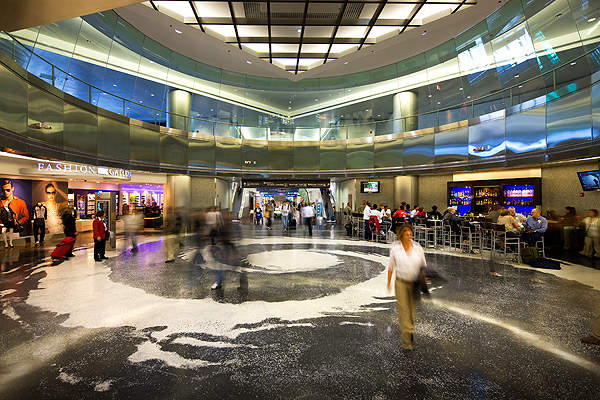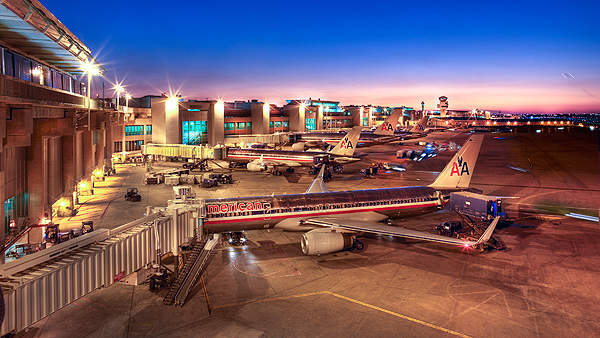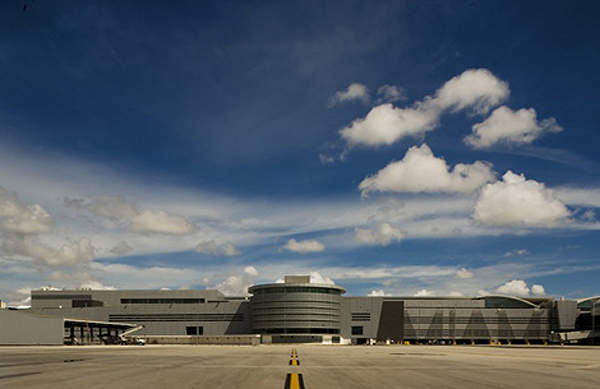Miami International Airport’s North Terminal Renovation was initiated in March 2006, and the new terminal was opened for passengers in 2014.
It principally involved the replacement of terminal Concourses A through D. Miami-Dade Aviation Department (MDAD) is the owner and operator of the airport.
The new terminal handles more than 300 flights a day and more than 25 million passengers each year.
The North terminal renovation was undertaken with the aim of increasing the passenger and aircraft handling capacity of the airport. The terminal’s new three-level international arrivals facility serves more than 2,000 passengers an hour.
Construction and renovation of Miami airport’s North terminal
The total cost of the renovation project is $2.95bn. Construction was divided into two phases. The first phase was valued at an estimated $855m, and was completed and opened to public in November 2009.
It involved 1.3 million square feet of newly constructed areas and renovation of 1.1 million square feet. It added 30 new gates, more than 115 ticket counters, more than 5,000ft of train guideways and three new Skytrain stations to the terminal.
The Skytrain is a rooftop automated people mover system.
Phase I saw the creation of 290,000ft² of space, 66 self-service check-in devices, 14 curb side check-in positions, two new security check points and 58 ticket agent positions.
Phase II of the project included renovation of 150,000ft² of space and the addition of ticketing counters. It also involved addition of a fourth North Terminal security checkpoint, new curbside areas for loading and unloading on the arrivals and departure levels, plus a new Skytrain.
A 400,000ft² federal inspection facility was also built as part of this phase.
The Skytrain service between concourse D and Gate D17 was started in September 2010 as part of phase II, and can transport up to 9,000 passengers an hour.
A 50,000ft² regional commuter facility was opened in August 2010, which includes two new concourse-level gates, outdoor walkways and a new passenger waiting area.
In July 2010, 16 new gates and a new security checkpoint were opened at the terminal.
Renovation works also included the installation of a 72-lane federal inspection area, an eight-lane re-check inspection area and a new baggage handling and delivery system.
Construction and renovation of Miami airport’s North terminal
The total cost of the renovation project is estimated to be $2.95bn. Construction is divided into two phases. The $855m phase I was completed and opened to public in November 2009.
It involved 1.3 million square feet of newly constructed areas and renovation of 1.1 million square feet. It added 30 new gates, more than 115 ticket counters, more than 5,000ft of train guideways and three new Skytrain stations to the terminal. The Skytrain is a rooftop automated people mover system.
The terminal now includes 290,000 square feet of space, 66 self-service check-in devices, 14 curb side check-in positions, two new security check points and 58 ticket agent positions.
Phase II of the project includes renovation of 150,000 square feet and the addition of ticketing counters. It also includes addition of a fourth North Terminal security checkpoint, new curbside areas for loading and unloading on the arrivals and departure levels, plus a new Skytrain. A 400,000 square feet federal inspection facility will also be built as part of this phase.
The Skytrain service between concourse D and Gate D17 was started in September 2010 as part of phase II. It can transport up to 9,000 passengers an hour. A 50,000 square feet regional commuter facility was opened in August 2010. It includes two new concourse-level gates, outdoor walkways and a new passenger waiting area.
In July 2010, 16 new gates and a new security checkpoint were opened at the terminal.
The terminal is currently undergoing the final construction phase, which includes installing a 72-lane federal inspection area, an eight-lane re-check inspection area and a new baggage handling and delivery system. It is expected to be completed by the second half of 2012.
Passenger facility improvements at Miami International Airport
The international arrivals area at the North terminal includes 72 passport control lanes, 14 ticket counters, an eight-lane security checkpoint, as well as easy access to the Concourse D Skytrain.
Banking and ATM facilities, internet access, a post office, auditorium, cell phone rental, a currency exchange, VIP clubs and airline lounges have also been added to the terminal.
More than 9,000ft2 of retail space is now available, with more than 80 restaurants and shops currently based at the site.
More than 20 additional concessions were opened at the terminal in 2011.
Baggage handling systems at the airport’s renovated North terminal
Siemens was awarded with a contract worth $210m to install a baggage handling system at the North terminal. The contractual scope included the installation of more than ten-miles of conveyor belts.
Luggage passes from the security checkpoint to the departing plane after the completion of a number security measures.
There are more than 25 explosion detection system devices located at the terminal site.
Contractors involved with the MDAD’s airport improvement project
The $1.1bn general construction contract for the North terminal renovation was awarded to the Parsons Odebrecht Joint Venture.
Corgan Associates designed the renovation in association with Anthony C Baker Architects and Planners.Construction was managed by Heery-S&G.
Sumitomo and Mitsubishi Heavy Industries were responsible for the manufacture of the Skytrain system, while the consultant for the Skytrain project was Lea+Elliott.
Leo A Daly is the prime architect for the A-B Concourse infill. The other consultants involved in phase I construction were Perez & Perez, Jacobs Engineering, TLC Engineering, EAC Consulting, Varley-Campbell & Associates and ARGUS Consulting.
Subcontractors involved in the project include Fisk Electric and Dynalectric for electrical contracts, Weathertrol Maintenance Corp for mechanical contractual works and Honeywell International for providing building management systems.
Commercial Interiors Contractors and GT Construction provided general site requirements. NR Windows offered metals and glass, while Wolfberg and Alvarez provided the tower design.
Other subcontractors included Merkury Development for Masonry finishes, Kone and Schindler for elevators and escalators, Decktight Roofing Services for roofing.
Crompton Construction, MAJV, Lotspeich, Thornton Construction, Allied Contractors and Acousti Engineering were also involved in the project in various capacities.




